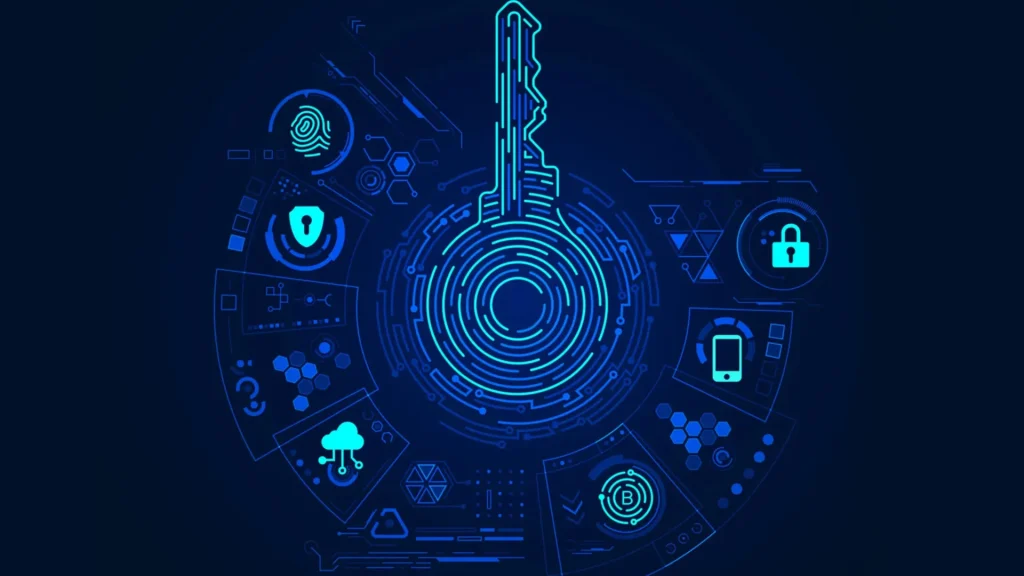In today’s digital world — especially within the realm of cryptocurrencies, blockchain, and cybersecurity — one word appears often: cryptography. But what exactly is it? And why is it so important?
Cryptography is the backbone of secure communication in the digital age. From securing Bitcoin transactions to protecting your private messages, cryptography is everywhere.

Definition
It is the science and art of encrypting and decrypting information to keep it secure. It ensures that only the intended recipient can access and understand the information — even if others intercept it.
In simple terms:
It is how we hide messages from prying eyes and verify that data hasn’t been tampered with.
How Does it Work?
It relies on mathematical algorithms and keys. When someone sends a message:
- It’s encrypted (converted into unreadable data).
- The receiver uses a key to decrypt it (turn it back into readable form).
There are two main types:
1. Symmetric Cryptography
- The same key is used to encrypt and decrypt data.
- Faster but less secure for large-scale systems.
- Example: AES (Advanced Encryption Standard)
2. Asymmetric Cryptography
- Uses a public key (to encrypt) and a private key (to decrypt).
- More secure and commonly used in blockchain and internet security.
- Example: RSA, Elliptic Curve Cryptography (ECC)
A Brief History
Cryptography isn’t new — it has a rich history dating back thousands of years:
Ancient History
- The Caesar Cipher (used by Julius Caesar) was a simple substitution method where each letter was shifted by a fixed number.
- Ancient Greeks used the Scytale, a tool for transposing letters.
World War II
- It played a huge role in WWII. The German Enigma machine was famously cracked by British mathematician Alan Turing, giving the Allies a strategic advantage.
Digital Age
- With the rise of computers in the 20th century, cryptography evolved rapidly.
- Algorithms like RSA and SHA-1 laid the groundwork for modern internet security and cryptocurrencies.
Why is it Important?
It protects data in many critical ways:
1. Confidentiality
Only authorized parties can access the information.
2. Integrity
Ensures the data hasn’t been altered in transit.
3. Authentication
Confirms the identity of the sender or system.
4. Non-repudiation
Prevents a sender from denying they sent a message (key in digital signatures).
Real Life Application
You probably use it daily, even if you don’t realize it:
| Application | How Cryptography is Used |
|---|---|
| End-to-end encrypted chats | |
| Online Banking | Secure login & transactions |
| Websites (HTTPS) | Encrypted connections |
| Cryptocurrency | Secures wallets & transactions |
| Digital Signatures | Verifies software or emails |
Cryptography and Cryptocurrency
In the crypto world, it is essential to how coins like Bitcoin, Ethereum, and others function.
Private Keys
Each wallet has a private key — like a secret password — used to sign transactions.
Hash Functions
Blockchain uses cryptographic hash functions (like SHA-256) to secure blocks of data.
Digital Signatures
Every crypto transaction includes a signature to prove its authenticity without revealing the private key.
Popular Cryptographic Algorithms in Crypto
| Algorithm | Use Case |
|---|---|
| SHA-256 | Bitcoin mining and block hashing |
| ECDSA | Ethereum & Bitcoin digital signatures |
| AES | Secure encrypted storage |
| Zero-Knowledge Proofs | Used in privacy coins like Zcash |
Advantages
- Data Security: Prevents unauthorized access, even during data breaches.
- Identity Protection: Masks personal and sensitive information.
- Trust in Digital Systems: Enables secure e-commerce, online voting, and decentralized finance.
- Auditability: In blockchain, cryptography allows all transactions to be verified publicly without compromising user privacy.
Limitations
While it is powerful, it’s not bulletproof:
- Human Error: Weak passwords or poor key management can compromise even the strongest encryption.
- Quantum Threats: Current algorithms may become vulnerable once quantum computing matures.
- False Sense of Security: Just because something is encrypted doesn’t mean it’s 100% safe — systems must still be designed securely.
Conclusion
It is the invisible shield that protects our digital lives. From safeguarding our money and identities to powering blockchain networks and cryptocurrencies, it plays a critical role in shaping secure and trusted systems.
As a crypto enthusiast, investor, or developer, understanding cryptography helps you appreciate how secure, decentralized systems actually work.
So next time you send Bitcoin, sign into an exchange, or scan a QR code — just remember: it’s all made possible by cryptography. Learn about Open source Blockchain